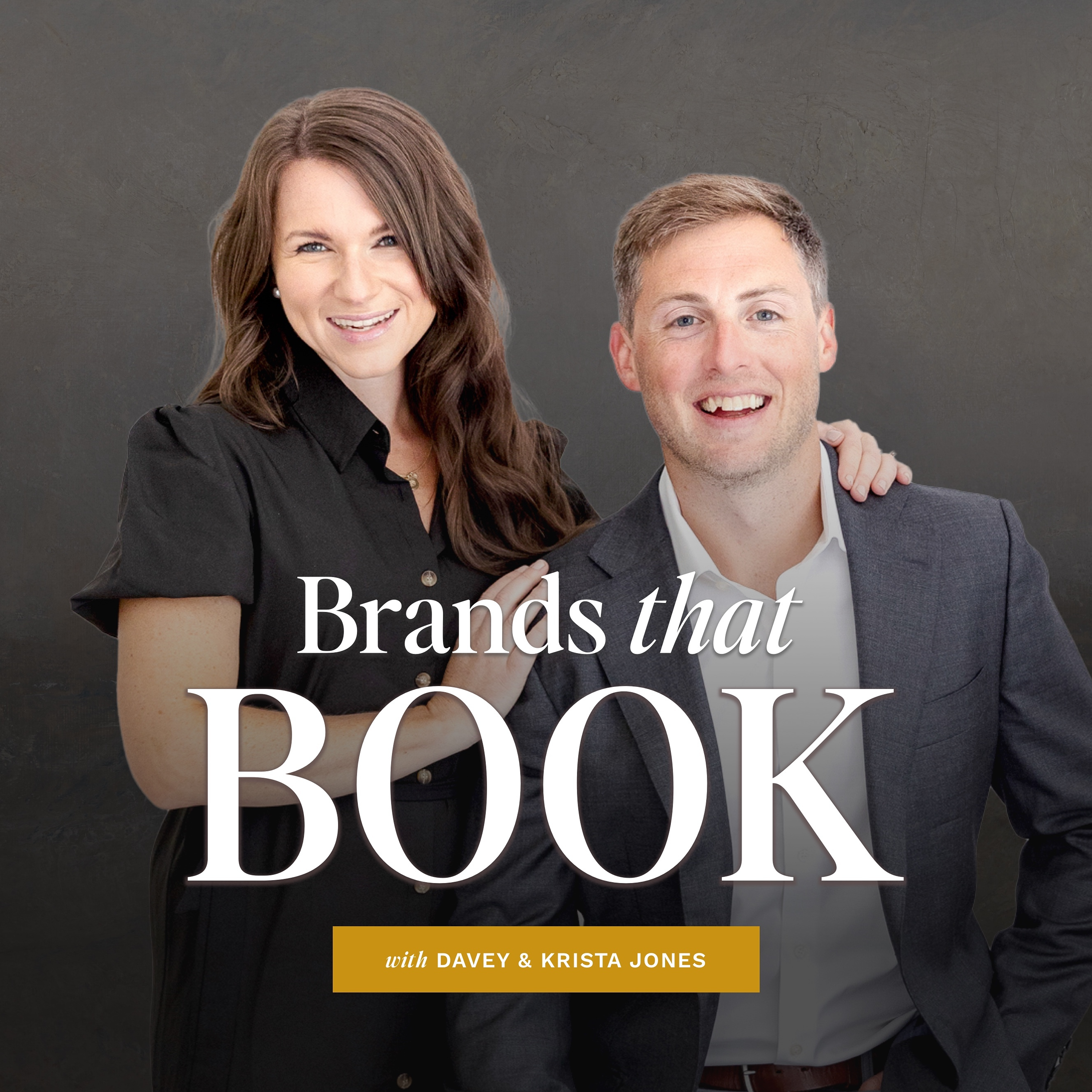
Episode resources and timestamps can be found at the bottom of the page.
We’ve been taking a hard look these past few months at how we share content, especially across social media. Basically, we weren’t thrilled with the amount of engagement and started to experiment with a few different strategies to increase engagement. And some of those experiments would make for an interesting, if not comical, podcast episode, at some point.
Today’s blog post and episode, however, focuses on one simple way that we were able to get more engagement on social media while also increasing the amount of referral traffic from our social channels to our website.
Keep reading (or listening!) if you’re ready to learn all about writing effective hooks. A simple tweak that can make a big difference!
Here’s why everyone should learn how to write good marketing hooks…
A quick outline of the problem:
We create content. And I mean content in the widest sense of the word, so maybe…
- You shot a wedding and have some incredible images to share.
- Wrote a blog post that contains a bunch of amazing advice.
- Recorded a podcast episode.
Whatever it is, you have something to share.
How do you get people to actually look at it?
You learn how to write an effective hook.
You see, many of us spend 90% of our time creating content and then 10% sharing that content. In reality, that should be flipped. We should be spending far more time getting that content shared and distributed than we do creating content.
To make the problem worse, many people take the content “Field of Dreams” approach and assume that if the content is created, people will read or view it.
Hooks make it more likely that your content will grab someone’s attention and engage a reader or viewer.
Alright, so what is a marketing hook? And where do I use hooks?
Simply, a hook is a statement that grabs someone’s attention.
In writing, the hook is often the first sentence of a story or essay that engages the audience.
A marketing hook serves a similar purpose: It grabs someone’s attention and—hopefully—convinces them to spend time on your sales page, advertisement, email, or blog post. Marketers should start thinking about any opportunity to catch someone’s attention as a place one would utilize a hook.
For example, you might use hooks in…
- YouTube videos and other social videos
- Emails (think headlines, preview text, and the first sentence)
- Blog posts
- Instagram and other social captions
The list could go on…
We’ve talked a lot about this on the podcast, but one of the most important questions a marketer can be asking is, “What’s the next step?” Hooks help get people to the next step. And it’s an important step because the hook is what gets people started. It’s what grabs their attention and gets eyeballs on your ad, social media post, blog post, etc.
What are the benefits of learning to write good hooks?
Learning to write effective hooks is such a simple way to increase engagement. We’ve found that by implementing these principles it has really improved referral traffic from social media posts about our content AND engagement on our social media posts.
But these tips can be applied to headlines, headings, opening paragraphs of posts, social media captions, YouTube videos, etc. Really, these are just indispensable principles for marketing.
Here are some of the benefits of focusing on creating compelling hooks:
- Increases engagement with content
- Better understanding of what catches your audience’s attention
- Improves one’s ability to summarize the “big idea” of a piece of content
One of my favorite benefits of learning to write hooks, however, is that it has improved our content. Because I start by brainstorming hooks, I feel like I’m more intentional in my content creation. It forces me to really highlight the practical takeaways when writing or recording content.
And when I’m creating hooks for our content, I’ll often come up with a few ideas that don’t fit the content I’m working on perfectly—which leads to ideas for more content!
What’s the difference between a hook and clickbait?
A hook is a captivating statement that grabs people’s attention, gets them to take the next step, and then serves helpful, related content. Clickbait also seeks attention, but then serves content that is irrelevant and unhelpful. Clickbait seeks to get clicks for the sake of clicks. Hooks seek clicks, but to serve people.
There are lots of ways to get someone’s attention. Make sure you do it in a way that’s tasteful and serves your audience.
How do we write a good hook?
When we’re developing hooks for our content, we typically use the following framework:
1. Elicit an emotional response: pique curiosity, get people fired up, and use humor. Familiarizing yourself with Maslow’s Hierarchy of Needs is a good way to start thinking about what your ideal customers actually desire or fear.
2. Make it personal: Why should people care? More specifically, why should your reader, listener, or viewer care?
3. Draw people in: Keep it punchy. Anything more than a line of text is too long. Remember, the hook is meant to draw people in! It doesn’t also have to make the sale, get the email, or explain the whole post.
Tips for writing hooks and examples…
One of the best ways to get better at creating hooks is by paying attention to how your favorite content creators engage you. When you’re browsing the internet or scrolling social media, what sticks out to you and why?
Here are a couple ideas for your next hook:
1. Make a controversial statement. I have a love/hate relationship with this tactic (I explain more on the podcast).
Example: “Don’t set a budget for 2023. Do this instead…”
2. Ask a provocative question.
Examples:
- What’s the best platform for SEO?
- Will the robots steal your job?
3. Break the pattern: subtly change a common saying or belief.
Example: Content might be king, but _____ is queen.
4. Drop people into the middle of a story.
Example: And the bride walked out of the church. You’ll never believe what happened next…
5. Make a promise.
Examples:
- This one simple tip will increase your engagement on Instagram by 137% in only 24-hours!
- Start ranking on Google today with this secret HTML code…
So there you have it! Looking for more tips on writing compelling hooks? Be sure to check out the podcast episode and related resources below.









VIEW THE COMMENTS
Add A Comment